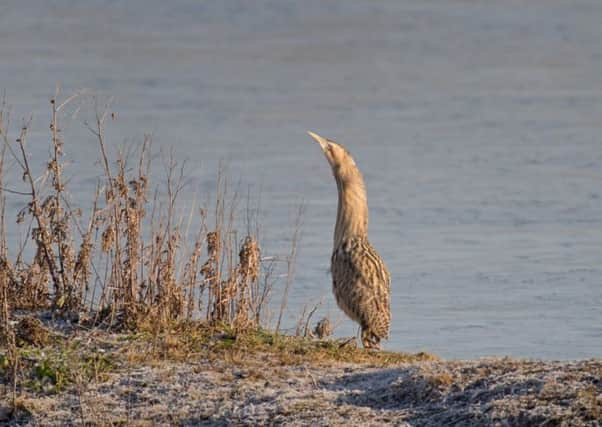Birdwatch: The boom of the bittern


One or two have been occasionally warming up last month at reserves such as Potteric Carr near Doncaster, Old Moor near Barnsley and Fairburn Ings near Castleford but it is from now that the competition begins in earnest.
The call is one of the lowest pitched produced by any bird and is easily imitated by blowing over the rim of a bottle.
Advertisement
Hide AdAdvertisement
Hide AdIt advertises a male’s presence both to females and rivals, and by recording each call it is possible to tell individual males apart.
The call begins with a few preliminary clicks and coughs, and then the bittern gulps in air, then pushes it out again. The resulting vibrations produce a loud and resonant sound that can carry for half a mile or more.
Each male needs to feed well in the winter so that, as breeding season approaches, he can build up muscles around the oesophagus to produce the booms - a process that can increase a male’s body weight by up to a fifth.
The better the booming, the more chance a male has of attracting females to his territory.
Advertisement
Hide AdAdvertisement
Hide AdA male can mate with up to five females, each of which will build a nest in his territory, lay and incubate the eggs and rear the young until fledging without any further contact with him.
The bittern is one of the great conservation success stories. Last year there were 140 booming males at 61 sites; the highest number since the 1800s, compared with 1997 when there were just 11 booming males at seven sites.
Since then the RSPB and other organisations, funded by the European Union’s LIFE Nature programme, have created more than 300 hectares of new reedbeds, an area the size of the City of London, and restored a further 350 hectares providing bitterns and other species with precious habitats.
Many of these new reedbeds are on the sites of former gravel and clay pits and opencast coal mines. Among these is Potteric Carr where bitterns first bred successfully for the first time last year.
Advertisement
Hide AdAdvertisement
Hide AdLet’s hope last year’s record total will be beaten this spring.
White-fronted geese from both the Greenland and European races have been seen in the region with two of the former at Seamer Carrs, Scarborough and three of the latter at Ingbirchworth and South Dikes reservoirs, South Yorkshire and one at Scaling Dam north of Whitby.
A taiga bean goose was present at the Haverton viewpoint on the Saltholme reserve, Teesside.
Three Iceland and a glaucous gull have been seen among the large gull flock at Rufforth airfield near York while a first winter Thayer’s gull, a vagrant from America, was first reported there on Monday.
Advertisement
Hide AdAdvertisement
Hide AdLong stayers included the drake American wigeon at Loscoe Lake, Normanton, black bellied dipper at Harpham, rough-legged buzzard at Grindale near Bridlington and great grey shrike at the Midhope Moor watchpoint, South Yorkshire.